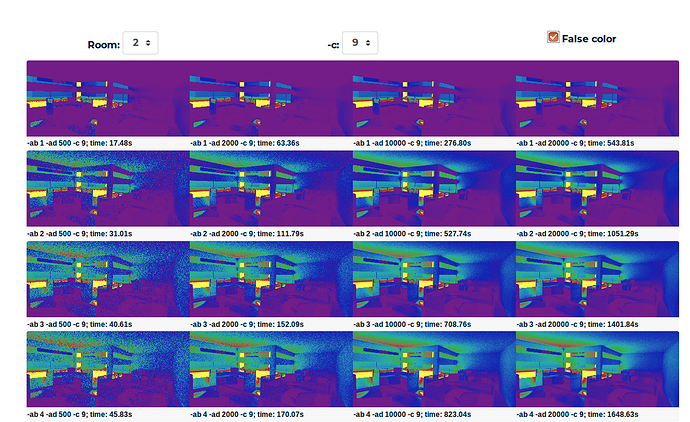The results with Honeybee[+] will be faster because rcontrib does not use ambient caching while rtrace does. Daysim, which is based on Christoph’s Reinhart’s research from 18 years ago uses rtrace. Honeybee[+] uses rcontrib.
(I am not sure if that was even one bit helpful. However, the other option is to suggest around 1000+ pages worth of journal papers, dissertations, presentations etc. to make that point).
Anyway, lets figure out first if your simulation parameters are right or not. There are two ways you can do that:
Option 1: Test for convergence
One way to do that will be to bump the -ad value to twice your current value and increase the -ab value by 1. Then check if you see a difference in results or not. The way to compare difference in results will be to pick a few hours randomly and see the results between the first calculation and second calculation with higher parameters. If there was a drastic change in results, then you will have to increase parameters further.
This is based on the idea of convergence testing. You can see an example below from http://www.ladybug.tools/radiance/image-parameters. Towards the lower right of the image sequence you’d notice that there is no difference in results.
Option 2: Test for fidelity
Essentially, all the annual methods, whether in Honeybee, HB[+], DIVA, etc. are finite element approximations of standard ray tracing calculations with continous skies. That approximation relates to the idea that a continuous sky can be approximated to a series of sky patches and that the position of the sun in the sky can be interpolated from three or four nearby positions out of a total of sixty positions. In Honeybee[+], we only approximate sky patches. The sun calculation is precise.
The way to test, the precision of a calculation through an (approximated) annual method will be to test its fidelity to an un-approximated claculation. So pick a time from your annual calculation, and then do a point in time simulation with climate-based sky for the same weather data and time. If your results are off, then you will have to increase the ambient parameters of your annual calculation till they match.
Here is one example of such a test by Mingbo: HB+, legacy and DAYSIM results
Five-Phase simulations should also take much less time than legacy version. However, it is hard to tell without looking at your model if you are doing it correctly. I dont have grasshopper, so @mostapha or someone else will have to weight in on this one.
